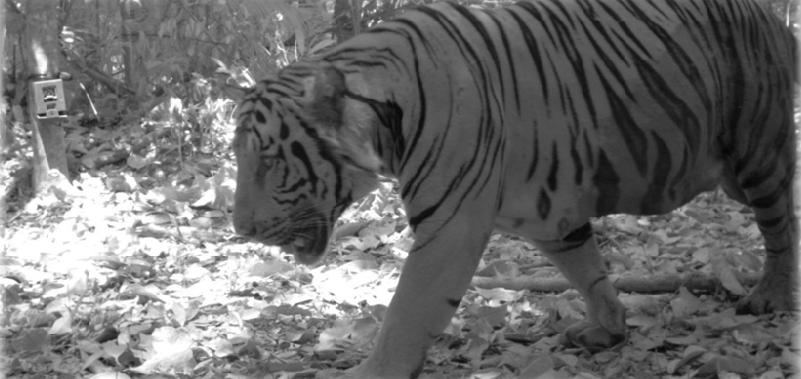Gopalasamy Reuben Clements
Other projects
In a threatened wildlife corridor known as Primary Linkage 7 in the state of Terengganu, Peninsular Malaysia, we aim to determine baseline population density estimates of three big cat species (Tiger, Leopard and Clouded Leopard) in order to facilitate monitoring of population trends. Our findings will be used to lobby for the corridor to be gazetted as a protected area.

One of the endangered Malayan Tiger individuals photographed in this project.
In Peninsular Malaysia, the government has developed a plan to restore connectivity to four fragmented forest complexes via a network of 17 primary ecological linkages to form a large forest complex known as the Central Forest Spine. However, to date, none of these corridors have formal protected area status and are thus under threat from a range of anthropogenic factors including poaching, conversion to rubber plantations and habitat destruction due to infrastructure development.
Our study area is located at one of these linkages - Primary Linkage 7, in the state of Terengganu. In 2010, we began researching the factors affecting habitat use of mammals in this area, as well as the extent to which viaducts along the highway that bisects the corridor, were utilized by mammals. Since then, we have recorded 43 mammals’ species in the area. After sharing this information with the state government, development along the corridor was frozen indefinitely, pending further recommendations from environmental consultants from the government. However, we still do not have an idea on how abundant certain threatened mammals species are, or whether such management interventions (i.e. suspended development) will be effective in the long term.
On this project, we aim to determine the first baseline population density estimates for three big cat species in our project area - the Malayan Tiger, Leopard and Clouded Leopard and a protected area status for the Kenyir Wildlife Corridor. A baseline density estimate is of particular importance in Kenyir, as it will allow us to monitor population trends and to assess the effectiveness management interventions. The work will also contribute to the outcomes of two national government plans to protect tigers and other animals - the Central Forest Spine (CFS) Master Plan for Ecological Linkages, and the National Tiger Action Plan for Malaysia.